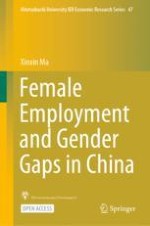Open Access 2021 | Open Access | Buch

Female Employment and Gender Gaps in China
verfasst von: Prof. Xinxin Ma
Verlag: Springer Nature Singapore
Buchreihe : Hitotsubashi University IER Economic Research Series
Open Access 2021 | Open Access | Buch

verfasst von: Prof. Xinxin Ma
Verlag: Springer Nature Singapore
Buchreihe : Hitotsubashi University IER Economic Research Series
This open access book investigates female employment and the gender gap in the labor market and households during China’s economic transition period. It provides the reader with academic evidence for understanding the mechanism of female labor force participation, the determinants of the gender gap in the labor market, and the impact of policy transformation on women’s wages and employment in China from an economics perspective. The main content of this book includes three parts―women’s family responsibilities and women’s labor supply (child care, parent care, and women’s employment), the gender gap in the labor market and society (gender gaps in wages, Communist Party membership, and participation in social activity), and the impacts of policy transformation on women’s wages and employment (the social security system and the educational expansion policy on women’s wages and employment) in China. This book provides academic evidence about these issues based on economics theories and econometric analysis methods using many kinds of long-term Chinese national survey data. This book is highly recommended to readers who are interested in up-to-date and in-depth empirical studies of the gender gap and women’s employment in China during the economic transition period. This book is of interest to various groups such as readers who are interested in the Chinese economy, policymakers, and scholars with econometric analysis backgrounds.